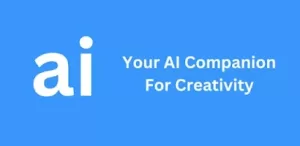
A Head-to-Head Comparison: Google Bard vs. ChatGPT-4 – Which AI Chatbot Reigns Supreme?
Introduction:
Artificial intelligence (AI) chatbots have made significant advancements in recent times, with Google Bard and ChatGPT-4 (GPT4) emerging as two prominent players in the field. In this article, we dive deep into the capabilities of these conversational AI tools and conduct a thorough comparison based on parameters such as human-like response, training dataset and underlying technology, authenticity of response, access to the internet, user-friendliness and interface, text processing capabilities, and pricing. Let’s see which chatbot comes out on top!
Parameter 1: Human-Like Response
When it comes to mimicking natural language and engaging in open-ended conversations, Bard surpasses ChatGPT-4. Bard’s responses have a more human-like quality, enabling it to generate contextually rich and authentic conversational content. It exhibits a nuanced understanding of questions and displays a conversational tone, although some users have noticed instances where Bard’s responses may come across as slightly offended or defensive.
Parameter 2: Training Dataset and Underlying Technology
Both Bard and ChatGPT-4 employ transformer architecture, a neural network model that processes sequential data. However, their training datasets differ significantly. ChatGPT-4 relies on a diverse dataset sourced from the internet, including books, articles, and documents. On the other hand, Bard’s training is focused on Infiniset, a dataset specifically designed for conversation and dialogue. This distinction allows Bard to excel in natural and open-ended conversations, leveraging context and intent to provide more accurate responses.
Parameter 3: Authenticity of Response
Authenticity is a crucial factor for chatbot users, and both Bard and ChatGPT-4 strive to deliver genuine responses. While Bard aims for ultra-authenticity and succeeds to a large extent, some users have encountered instances where Bard’s responses deviate from accuracy or even generate fake news. ChatGPT-4, with its extensive training on diverse textual data, exhibits a higher level of authenticity, making it suitable for tasks such as summarization and paragraph writing.
Parameter 4: Access to the Internet
One significant distinction between Bard and ChatGPT-4 lies in their access to the internet. Bard can retrieve real-time information from the web, ensuring up-to-date responses. In contrast, ChatGPT-4’s dataset is limited to information available up until late 2021. Bard’s internet connectivity offers a clear advantage in terms of providing the latest research findings and addressing current topics.
Parameter 5: User Friendliness and Interface
When it comes to user experience, Bard takes the lead with its user-friendly interface. The interface is visually appealing, with well-formatted text that is easy to scan. Bard offers additional features such as editing questions after they have been asked, upvoting or downvoting responses, and searching for related queries on the web. While ChatGPT-4 provides a satisfactory user experience, Bard’s interface appears cleaner and more organized.
Parameter 6: Text Processing: Summarization, Paragraph Writing, Etc.
For text processing tasks such as summarization and paragraph writing, ChatGPT-4 emerges as the stronger contender. Its training on vast amounts of textual data enables it to generate accurate and comprehensive outputs. While Bard excels in conversation and dialogue, ChatGPT-4’s capabilities make it a versatile tool for natural language processing applications.
Parameter 7: Charges and Price
It’s worth noting that access to ChatGPT-4 is not entirely free and comes with limitations on the number of questions that can be asked per day. On the other hand, Bard is available free of charge to all users.
Conclusion:
In conclusion, Google Bard and ChatGPT-4 each have their strengths and weaknesses in the realm of conversational AI. Bard shines in its ability to deliver human-like responses, offer a user-friendly interface, and provide real-time access to the internet.
However, it falls short in terms of generating authentic responses consistently and avoiding hallucinations or fake news. On the other hand, ChatGPT-4 excels in text processing tasks such as summarization and paragraph writing, making it a valuable tool for those working with natural language processing. It delivers a higher level of authenticity in its responses, although it lacks real-time internet access.
Additionally, access to ChatGPT-4 is limited and comes at a cost, while Bard remains free for all users. When choosing between the two, it is essential to consider the specific use case and requirements to determine which chatbot is best suited for the task at hand.







